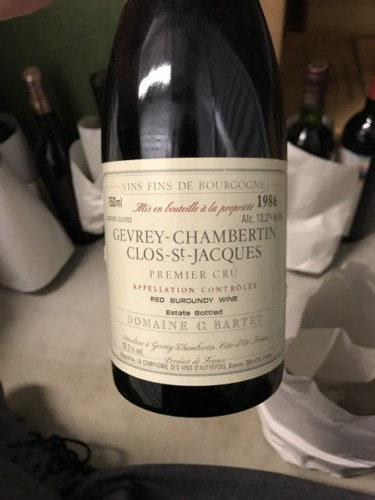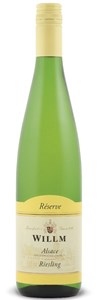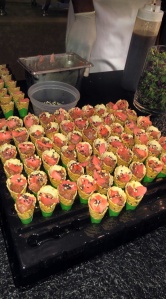Just Like Wine, We All Need to Breathe
* As featured in Wine Enthusiast Best of Year Issue 2023

Stocksy
Is it just me or does life these days feel faster paced and more stressful than ever? The cadence in general seems to be accelerating and multitasking is the new norm. I suppose we can blame some of that on the pandemic lockdown, doom-scrolling and 7-second viral videos (thanks, TikTok). All of a sudden, AI instantly creates content that used to take us humans hours or days. Pile on the daily grind and normal life events that we all endure, and that additional tension in your neck and shoulders is easily explained.
Whatever it is that makes you feel as wound up as a yo-yo ready to be unleashed, there is always one activity that can help reduce those stress levels and bring you back to neutral: breathing. Sometimes we forget that just a few simple long, deep and drawn-out breaths can help us relax and get centered. Just as we all can benefit from a few minutes of box breathing or the deep 4-7-8 breathing technique (which refers to the seconds you take to inhale, hold and exhale—an exercise I highly recommend), our most treasured bottles of wine can benefit from that same deep breathing to unwind and unravel themselves into a more relaxed state.
You may have just read that last sentence and asked, “How can wine relax?” Think about this for a moment: Have you ever opened a really young, big and brash red wine? Say a Napa Cab, a Priorat, an Australian Shiraz or even a Côte Rôtie, for example? If you just pop the cork on these wines and pour yourself a sip, there’s a high likelihood of it being extremely overpowering with super concentrated fruit, high alcohol levels and maybe massive tannins that will have you sucking in your cheeks. These wines can come across as wound-up, or tight, and even one-dimensional in their first showing straight out of the bottle.
But allow these same wines to interact with oxygen, and you might imagine they breathe their own sigh of relief while swirling around in the decanter or glass. The densely concentrated fruit stretches its legs and exudes a variety of primary aromas and flavors hidden upon first sip. And those gripping, gritty tannins will simmer down and soften, just enough to let you know they are there without overpowering the palate. That alcohol level will still be elevated, but with the fruit and tannins now released and relaxed, the perceived balance of these structural components begins to find harmony on the palate, gaining complexity as the wine continues to unfurl. It’s almost like the wine went from being crunched in the fetal position in the bottle to fully sprawled on a velvet couch, exposing its inner beauty layer by layer. If you are not sold on how important breathing is for yourself, just try and go for a minute without it. This is why these deep, calming and focused breathing techniques help our bodies take in as much clean and healthy oxygen as possible while releasing all of that carbon dioxide, and negativity, on the out-breath.
This article originally appeared in the 2023 Best of Year issue of Wine Enthusiast magazine. Click here to subscribe today!




 Sancerre for this paring. The flinty minerality in these high acid, citrus fruit based wines seem to bring out all the lively flavors and freshness in any chilled seafood dish. Domaine Jean-Paul Balland a wonderful expression of Loire Sauvignon Blanc and at around $20 is a great value. The Pascal Jolivet is also a solid option and is usually under $20 a bottle. A dry, high acid Finger Lakes Riesling will also work with all those raw bar goodies. Any of the selections from Herman J. Wiemer (particularly the Reserve Dry Riesling) are sure to please the palate. Pinot Grigio is a popular light white wine for this part of the meal, but quite frankly unless it is REALLY good, it’s a little too neutral. But if PG is your go to, try and grab one from the Collio region…Fiegl always makes a solid offering.
Sancerre for this paring. The flinty minerality in these high acid, citrus fruit based wines seem to bring out all the lively flavors and freshness in any chilled seafood dish. Domaine Jean-Paul Balland a wonderful expression of Loire Sauvignon Blanc and at around $20 is a great value. The Pascal Jolivet is also a solid option and is usually under $20 a bottle. A dry, high acid Finger Lakes Riesling will also work with all those raw bar goodies. Any of the selections from Herman J. Wiemer (particularly the Reserve Dry Riesling) are sure to please the palate. Pinot Grigio is a popular light white wine for this part of the meal, but quite frankly unless it is REALLY good, it’s a little too neutral. But if PG is your go to, try and grab one from the Collio region…Fiegl always makes a solid offering.

 choice to complement one another. My mom makes a mean shrimp and calamari fra diavolo which is always a Christmas tradition for our feast. I love to pair this up with a quality Barolo or Chianti Classico Riserva. Monsanto CCR for around $20-25 is pretty tough to beat, but the Marchese Antinori CCR for $40-50 may be my all-time favorite… particularly the 2007 vintage. As far as Barolo, the 2012 Fontanafredda Seralunga D’alba is drinking like a champ right now, and for under $40 is about a good a deal you can get in the Barolo world.
choice to complement one another. My mom makes a mean shrimp and calamari fra diavolo which is always a Christmas tradition for our feast. I love to pair this up with a quality Barolo or Chianti Classico Riserva. Monsanto CCR for around $20-25 is pretty tough to beat, but the Marchese Antinori CCR for $40-50 may be my all-time favorite… particularly the 2007 vintage. As far as Barolo, the 2012 Fontanafredda Seralunga D’alba is drinking like a champ right now, and for under $40 is about a good a deal you can get in the Barolo world.



/cdn0.vox-cdn.com/uploads/chorus_asset/file/6652497/unspecified-1.jpeg)
 already reaching for more refreshing white options. While Sauvignon Blanc and Pinot Grigio are always popular, as an overly broad generalization, they tend to seem a little too simplistic (sorry Santa Margherita and Brancott fans). As of late I find myself reaching for that dry style of Riesling from a multitude of regions as well as Chenin Blancs from the Loire and South Africa. The nice part about all of these wines is that they typically offer a solid value.
already reaching for more refreshing white options. While Sauvignon Blanc and Pinot Grigio are always popular, as an overly broad generalization, they tend to seem a little too simplistic (sorry Santa Margherita and Brancott fans). As of late I find myself reaching for that dry style of Riesling from a multitude of regions as well as Chenin Blancs from the Loire and South Africa. The nice part about all of these wines is that they typically offer a solid value. sling
sling means they have to be versatile, hearty and food friendly (which typically means they need a good dose of acidity). Let’s not forget that it’s hot out there… so some lighter, thirst quenching reds (which can even be served slightly chilled) are integral to any successful July 4th BBQ. I get made fun of all the time for my infatuation with the
means they have to be versatile, hearty and food friendly (which typically means they need a good dose of acidity). Let’s not forget that it’s hot out there… so some lighter, thirst quenching reds (which can even be served slightly chilled) are integral to any successful July 4th BBQ. I get made fun of all the time for my infatuation with the  is solid just about every vintage and can be found for just a few bucks more. Of course if you are feeling saucy and looking to splurge on something, how about a
is solid just about every vintage and can be found for just a few bucks more. Of course if you are feeling saucy and looking to splurge on something, how about a  u can find the
u can find the 



